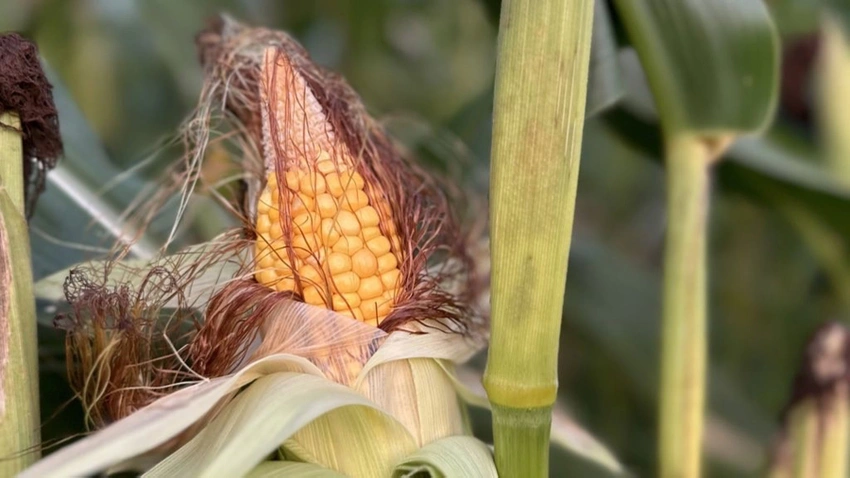As we prepare to wave goodbye to 2023, Don Close, chief research and analytics officer at Terrain Ag weighed in on current commodity markets and what we can expect around the bend. From corn and soybeans to hogs and cattle, he delivered a 2024 Industry Outlook to attendees of the Midwest Regional Workshop for the Agricultural Communicators Network (ACN) on Nov. 6 in St. Louis, Mo.
While the corn market is lackluster with a hefty carryover and slow exports, energy builds around soybean crushing and the expansion of the renewable diesel market. On the livestock front, the 2023 hog market started strong out of the chute but has since stalled; and the recovery of the cattle market has potential to be the next Cinderella story.
Regardless, quality matters and the U.S. delivers. Close said, “If you take the stability of where we are at with the quality of crops and livestock, I think the U.S. is in the catbird seat of being the agriculture supplier of the world. We are going to have our challenges, but from where we are positioned, we are in great shape.”

Don Close, chief research and analytics officer at Terrain Ag weighs in on current commodity markets and what we can expect around the bend – from corn and soybeans to hogs and cattle. Photo by: Pam Caraway
Renewable Fuels Crush Soybeans
Corn exports lag, as the market ends the year with little enthusiasm and an expected 2.1-to-2.2-billion-bushel carryover.
“It’s not a wreck. There’s just not any momentum. There is no real excitement or discussion point with this existing crop,” Close said.
Corn prices center at $5 per bushel, which is just enough to cover the cost of production. Close said, “There will be a lot of producers who show a modest profit and a lot who show a modest loss.”
“The market is ready to skip past this year and already looking at planted acreage for the 2024-25 crop year. Simple logic would place next year’s corn crop at 91 to 91.5 million planted acres, but that could land somewhere closer to 93 million,” he projected. “We will see where we are through the winter.”
As for the soybean market, stocks remain tight, exports are slightly behind, and the average price lingers around $13 per bushel. Yet, Close said the “real story” is in soybean crushing. Much anticipation is centered around crushing to meet the demand for renewable diesel and other soy biproducts.
“Right now, there are 16 to 21 soybean crushing facilities under some level of construction or planning,” he said. “Renewable diesel will be a gamechanger.”
Close compared this anticipation to what was seen in the corn market with ethanol production. “The difference I see with beans is if we escalate crush to the level of beans we are talking about, we will suddenly move from being a net exporter of beans to a net exporter of components,” he said.
However, building these facilities will take time, and the excitement should be approached with caution.
“In my opinion, the anticipation is greater than the event. I think the time lapse to get there is greater than the huge enthusiasm built into the market right now.”
Prop 12 Upends Hog Market
Of all the markets, the hog market poses the most difficulty. The year started with strong exports, Close said, but those stalled to end the year with a great level of discomfort.
To top it off, production is at a record high at 11.61 pigs weaned per litter according to the USDA National Agricultural Statistics Service (NASS) quarterly report for June-to-August. While there is sow liquidation, it is not enough to offset the per-litter increase.
Another issue comes with the fallout from California’s Proposition 12 (Prop 12), a rule that applies to all uncooked pork in the state – even pork raised outside of the California border. Prop 12 is an animal cruelty law that not only set a minimum confinement of 24 square feet per sow, but also banned the sale of pork in California from any offspring of sows kept in pens less than that standard.
Since California represents approximately 15% of the U.S. pork demand but produces very little pork, this has created a market imbalance. Close said everything that does not qualify for Prop 12 gets absorbed into the balance of the country, and consumers are seeing as much as a $2 increase in pork cuts at the counter.
“This is the market where I have the highest level of angst and complication of how we get turned around,” he said. “We have a heavy level of production. We also have a consumer demand issue on the palatability of pork. Both of those are really hard to fix.”
While the pork industry has work to do, the cattle market has potential to be the next Cinderella story. Close said, “I’ve lived my entire life for this market. It is the most amazing thing I’ve ever seen, and it’s not done.”
He referred to the 11.6 million cattle on feed inventory from the Oct. 1 USDA NASS monthly report. Of that, 40% are heifers. Close said liquidation is underway as the market inches closer to expansion.
“The magic number is 36 to 37% of heifers on feed. You have to get below 36% to expand, and we are not there yet,” he said, projecting it will be deep into 2024 or 2025 before we see that expansion.
This expansionary phase comes with hurdles in managing feeder cattle costs like increased labor, materials, insurance, and fuel. Close noted expansion may also lead to buying frenzy of bulk females, similar to what farmers saw in 2014. That is unsettling for some who purchased females in 2013 and 2014 but have not made a dime on them yet.
Close said, “The problem with buying a developing heifer is that you have two years before you have a sellable product. Growth and gestation take time. The rally is over before you have anything to market.”
Regardless, Close said the good news comes in demand. Close reported that while consumers have somewhat backed away from purchasing high-end beef products like we saw during the COVID pandemic, consumers are still buying beef.
Source : Farm Progress

